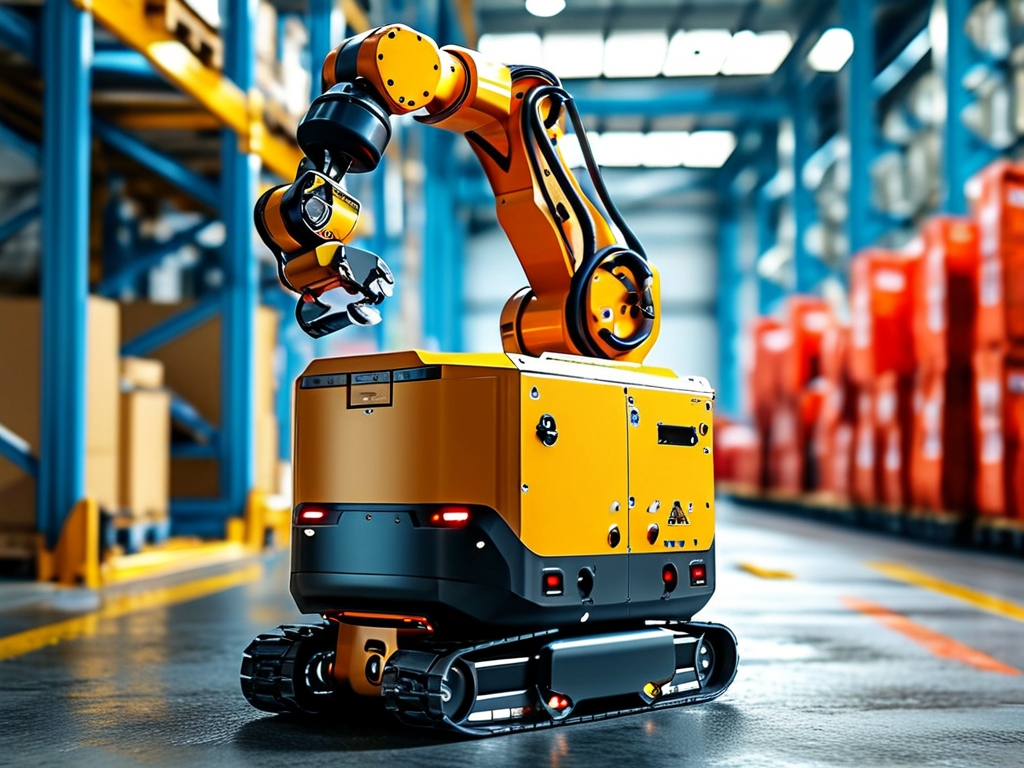Autonomous Mobile Robots (AMRs) have revolutionized material handling across industries, offering unprecedented flexibility, efficiency, and adaptability. Unlike traditional Automated Guided Vehicles (AGVs), which rely on fixed paths and infrastructure like magnetic tapes or wires, AMRs leverage advanced technologies to navigate dynamically. This article explores the core components, operational principles, and real-world applications of AMR technology.
Core Technologies Powering AMRs
-
Simultaneous Localization and Mapping (SLAM)
AMRs use SLAM algorithms to create real-time maps of their environments while tracking their own positions. Sensors like LiDAR, cameras, and ultrasonic devices collect spatial data, enabling robots to "see" obstacles, adjust paths, and optimize routes. This technology eliminates the need for predefined tracks, making AMRs ideal for dynamic warehouses. -
Sensor Fusion and Perception Systems
AMRs integrate multiple sensors to ensure safe navigation. For example:- LiDAR provides 360° depth perception for obstacle detection.
- 3D cameras identify objects and measure distances.
- Inertial Measurement Units (IMUs) track acceleration and orientation.
These systems work together to prevent collisions and adapt to changing layouts.
-
AI-Driven Path Planning
Advanced algorithms allow AMRs to calculate the most efficient routes in real time. Machine learning models analyze historical data to predict traffic patterns and bottlenecks, further improving productivity. -
Cloud Connectivity and Fleet Management
AMRs are often part of a networked fleet controlled by centralized software. Cloud-based platforms enable tasks like load balancing, remote diagnostics, and software updates. Operators can monitor performance metrics and reconfigure workflows seamlessly.
Applications in Modern Industries
AMRs excel in diverse scenarios:

- Warehousing: Automating goods transportation between storage zones, packing stations, and loading docks.
- Manufacturing: Delivering components to assembly lines just-in-time, reducing downtime.
- Healthcare: Transporting medical supplies in hospitals while adhering to strict hygiene protocols.
- E-commerce: Accelerating order fulfillment in high-demand distribution centers.
Advantages Over Traditional AGVs
- Flexibility: AMRs adapt to layout changes without infrastructure modifications.
- Scalability: Adding or reallocating robots is cost-effective and quick.
- Safety: Collision avoidance systems ensure safe coexistence with human workers.
- Cost Efficiency: Reduced installation and maintenance expenses compared to fixed AGV systems.
Challenges and Future Trends
While AMRs offer immense potential, challenges remain:
- Complex Environments: Highly cluttered or unstructured spaces still pose navigation difficulties.
- High Initial Investment: Small businesses may find upfront costs prohibitive.
- Integration Complexity: Aligning AMR workflows with existing ERP/WMS systems requires expertise.
Future advancements aim to address these issues:

- Swarm Intelligence: Coordinated fleets of AMRs working collaboratively.
- 5G and Edge Computing: Ultra-low latency communication for real-time decision-making.
- Energy Innovation: Longer-lasting batteries and wireless charging solutions.
AMR technology represents a paradigm shift in material handling, combining autonomy, intelligence, and adaptability. As industries embrace Industry 4.0, AMRs will play a pivotal role in building agile, future-ready supply chains. By overcoming current limitations through continued R&D, these robots are poised to redefine productivity standards across the global economy.


